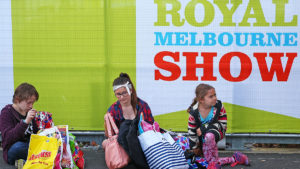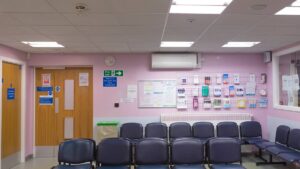Australia might be able to 3D print its way out of a COVID-19 supply shortage

A Chinese citizen wears a mask with the Beijing skyline in the background. Picture: Getty Images
3D printed medical devices are the next stage of the coronavirus pandemic, as companies race to quickly supply the complicated devices needed to keep sick people alive.
Australian companies are still to catch up with trends in Europe and Silicon Valley to find new ways to quickly make personal protective equipment (PPE).
“There is significant interest in utilising 3D printing technology to be able to print medical devices and components locally, given the shortages and problems in sourcing supply in the global chain,” says Tim Naylor from 3D Systems.
He says the interest is coming from blue chip and well known medical device companies.
There are very few 3D printing companies on the ASX with the capability to make the kinds of supplies Australia might need. Aurora Labs (ASX:A3D) is one, and Titomic (ASX:TTT) is another, although it has focused its metal printing technology on the defence and maritime industries so far.
It’s all go in Silicon Valley
Overseas, authorities are looking to 3D printers as well as experienced manufacturers to get access to quickly-made designs and supplies.
The European Commission has asked the European Association for Additive Manufacturing to find out whether its members could make medical equipment for hospitals such as valves and ventilators.
An Italian startup named Isinnova stepped up to make replacement ventilator valves for the Chiari hospital in Brescia, when the manufacturer wasn’t able to deliver new parts in time.
Italian media reports say the parts saved 10 people’s lives.
HP is working to allow its 3D printers to make medical face shields, hands-free door openers, an adjuster for face masks, and “hospital-grade” face masks and parts for simple emergency ventilators. It’s allowing 3D printer customers free downloads of its medical equipment designs.
Carbon has made face shield designs for its printers and is sending those to customers who’ve bought its printers. The company said Ford had already used the design to make 1000 masks for Michigan hospitals.
It says it’s also working on respirator masks and ventilator designs with General Electric and 3M.
US business Formlabs is designing 3D printed nasal swabs for testing kits, Belgian company Materialise has made hands-free door openers, and Czech company Prusa Research has donated 10,000 face shields to the Czech government.
Not as easy as hand sanitiser
While selling hand sanitiser to panicked masses was relatively easy for a group of fast moving companies, designing, making and selling medical equipment is not.
All high-demand supplies are currently being controlled by the Department of Health, meaning companies will need to work with the government to sell any supplies into the medical system which is committed to supporting local production of PPE.
and last week’s call from the government for help making PPE was answered by 130 companies.
Furthermore, any equipment will need to be approved by the Therapeutic Goods Administration (TGA), the medical industry regulator. There are concerns within industry that hastily 3D printed supplies won’t meet Australian standards.
Any newly designed equipment, and therefore unregistered by the TGA, will need regulatory approval. And most equipment would have to be redesigned to avoid legal trouble over intellectual property.
The Italian company Isinnova could be facing legal action from the manufacturer of the ventilator part, because it had to copy it outright.
3D Systems’ Naylor says this is an issue that customers ordering any parts will need to consider as they’d have to design their own devices and components.
“The beauty of 3D printing is you can change design and components and develop your own IP very quickly.”
Shortages still a problem
In early March, Australia’s secret stockpiles of medical equipment included about $100m worth of medical supplies, including 20 million masks as well as antibiotics, vaccines and hand sanitisers.
This week, Minister for Health Greg Hunt said 1.5m face masks had just arrived in the country and 54m were expected by the end of April.
“In fact, 30 million of those will be in the country within the next two weeks, ahead of schedule, which I think is important,” he said.
But frontline staff at medical centres, hospitals and pharmacies say it won’t be enough.
Royal Australian College of General Practitioners president Dr Harry Nespolon says many GPs have had difficulty finding face masks and other essential personal protective equipment.
“There is huge demand for PPE worldwide due to COVID-19 and this came after the bushfires in Australia, which caused shortages of face masks in some areas,” he said.
“Removing the barriers to PPE and getting it out to the GPs and other health workers who need it must be a priority. It’s not just about surgical and P2 masks, practices need ongoing access to gowns, gloves and eyewear for the protection of those on the frontline.”
Related Topics
UNLOCK INSIGHTS
Discover the untold stories of emerging ASX stocks.
Daily news and expert analysis, it's free to subscribe.
By proceeding, you confirm you understand that we handle personal information in accordance with our Privacy Policy.








